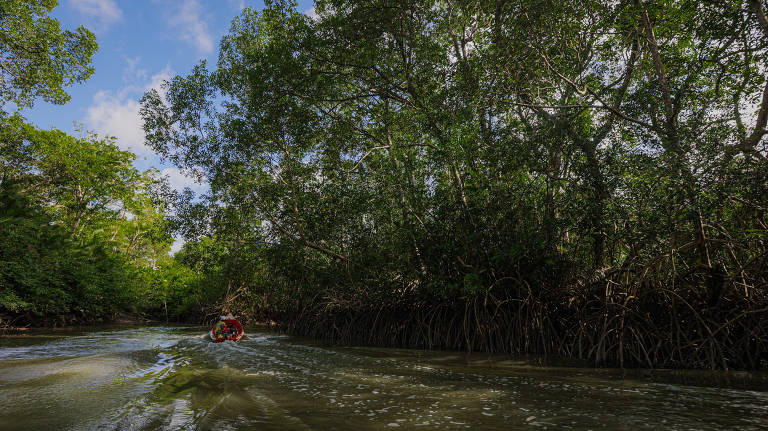The largest in the World, Amazonian Mangroves Are Threatened by Climate Change
Muddy soil. Sulfur smell. Trees with high roots, capable of expelling excess salt from the soil. At first glance, it is hard to believe that there is an abundance of life in mangroves, but they are much richer in biodiversity than one might imagine. In an area that extends for almost 8,000 km along the northern coast of Brazil, from Amapá to Maranhão, there are mangrove forests with trees up to 40 meters high. In this region, mangroves become a rich and diverse ecosystem.

Mangroves are areas where freshwater from rivers meets the sea and compose typically tropical coastal ecosystems, not existing above a certain latitude where there is a strong temperature variation. Various species of animals also live in them, both invertebrates and vertebrates, such as birds, fish, and crustaceans, such as the mangrove crab.
According to a study published last year in the scientific journal Anais da Academia Brasileira de Ciências, Amazonian mangroves are the largest and best-preserved in the world.
This is due to several factors, according to the authors, but mainly because of the forest cover that surrounds the estuarine areas. In the race against time to protect mangroves amid the climate crisis, public policies such as the creation of environmental preservation areas by the federal government help keep this forest standing. However, in recent years, the increasing presence of predatory fishing and human exploitation in the region have pressured Amazonian mangroves.
Read the article in the original language
O que você está lendo é [The largest in the World, Amazonian Mangroves Are Threatened by Climate Change].Se você quiser saber mais detalhes, leia outros artigos deste site.











Wonderful comments